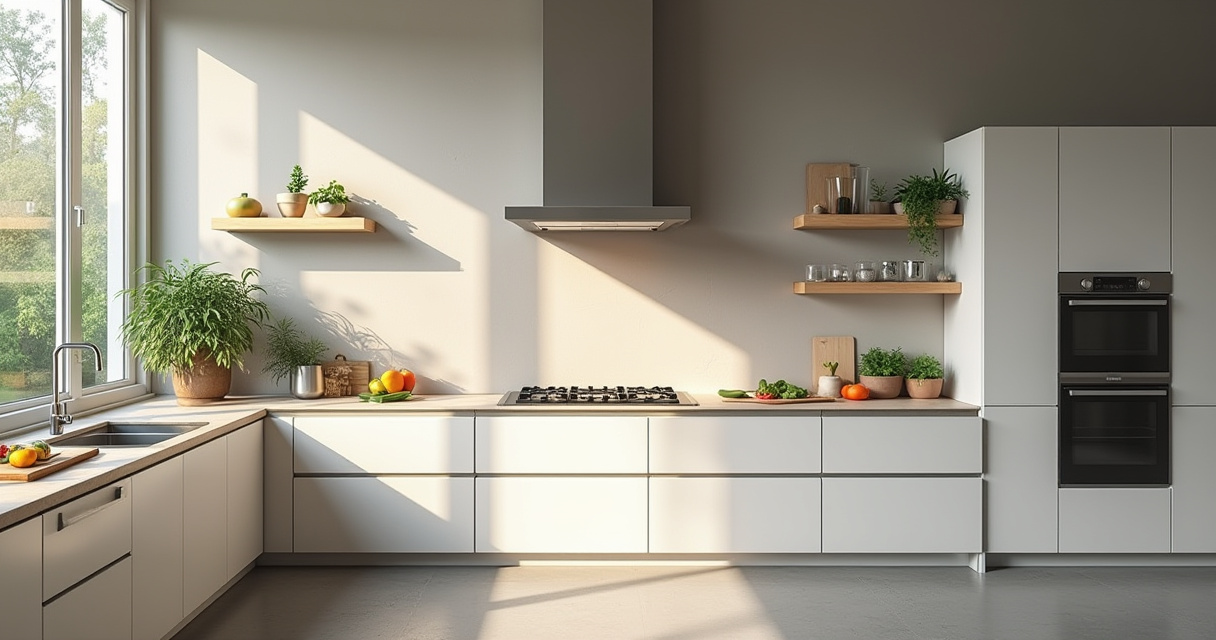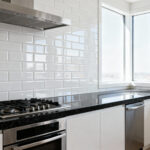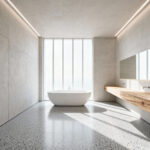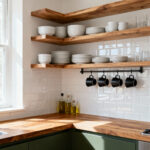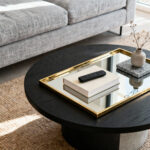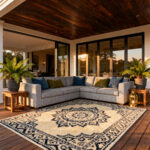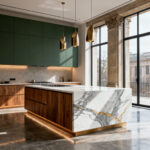Can we talk about why so many expensive kitchen renovations end up feeling… wrong? You know the feeling. You’ve scrolled through a thousand images, spent a fortune on marble, and installed the exact cabinets you saw in a magazine. But when you stand back, something is off. It feels cold, or impractical, or just not you. It’s a designer’s worst nightmare, and I’ve seen it happen to people who had the best intentions.
The noise online tells you to follow trends—the “it” color of the year, the must-have appliance. But the real story, the secret to a kitchen that you’ll love for decades, has nothing to do with chasing fads. It’s about translating your life into a physical space. It’s about investing in the things you touch every day and understanding the quiet principles that separate a merely expensive kitchen from a truly luxurious one. Let’s cut through the noise. Here’s what actually matters.
Laying the Groundwork: Vision and Planning (Part 1)
This is the most critical phase, and it’s the one everyone wants to rush. Don’t. Getting this right saves you from heartbreak and budget disasters later. This isn’t about picking colors; it’s about defining the entire soul of your kitchen before a single hammer swings.
1. Assess Your Lifestyle First: How a Day-in-the-Life Informs Your Kitchen’s Flow
Forget the “work triangle” for a moment. I want you to think about your “life path.” Where do you drop the mail and keys when you walk in? Where do you pour that first cup of coffee? Where does everyone gather with a glass of wine while you’re cooking? These are the real pathways that define how your kitchen needs to function. The noise is all about perfect, sterile layouts. What matters is designing for the beautiful mess of your actual life.
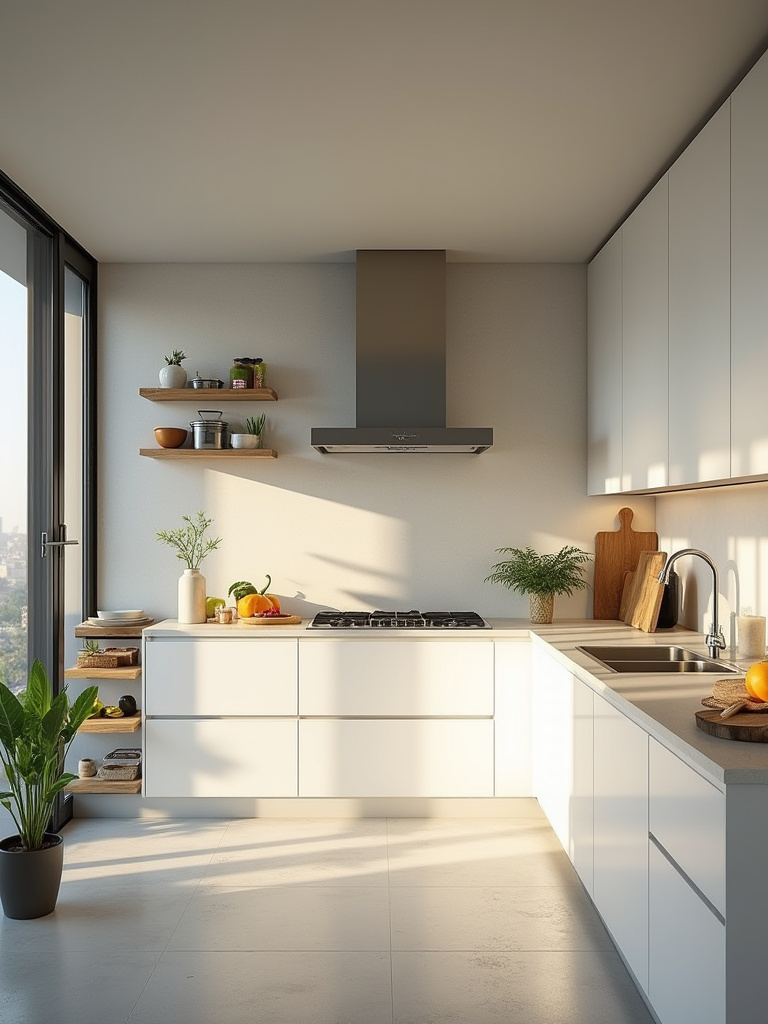
I once had a client who was adamant about a massive, monolithic island. But when we talked, we realized her kids did their homework at the counter every day, while she prepped dinner. We scrapped the single-level design for a split-level island with a durable, lower-height section for the kids and a pristine marble work surface for her. It completely changed the dynamic, turning a potential point of conflict into a cherished family hub. It’s that level of deep thinking that makes a space truly work.
Mapping out your real-life flow is the first step. Next, you have to define the aesthetic that will feel like you, not like a carbon copy of a Pinterest board.
2. Define Your Aesthetic North Star: Uncovering Your Preferred Design Style for Cohesion
Please, stop gathering images of just kitchens. You’re limiting yourself. Your “Aesthetic North Star” should be pulled from everything you love—the boutique hotel you adored in Paris, the texture of your favorite cashmere sweater, the color palette of a landscape painting. Create a mood board that captures a feeling. This becomes your gut check for every single decision, from the cabinet profile to the finish on the faucet.
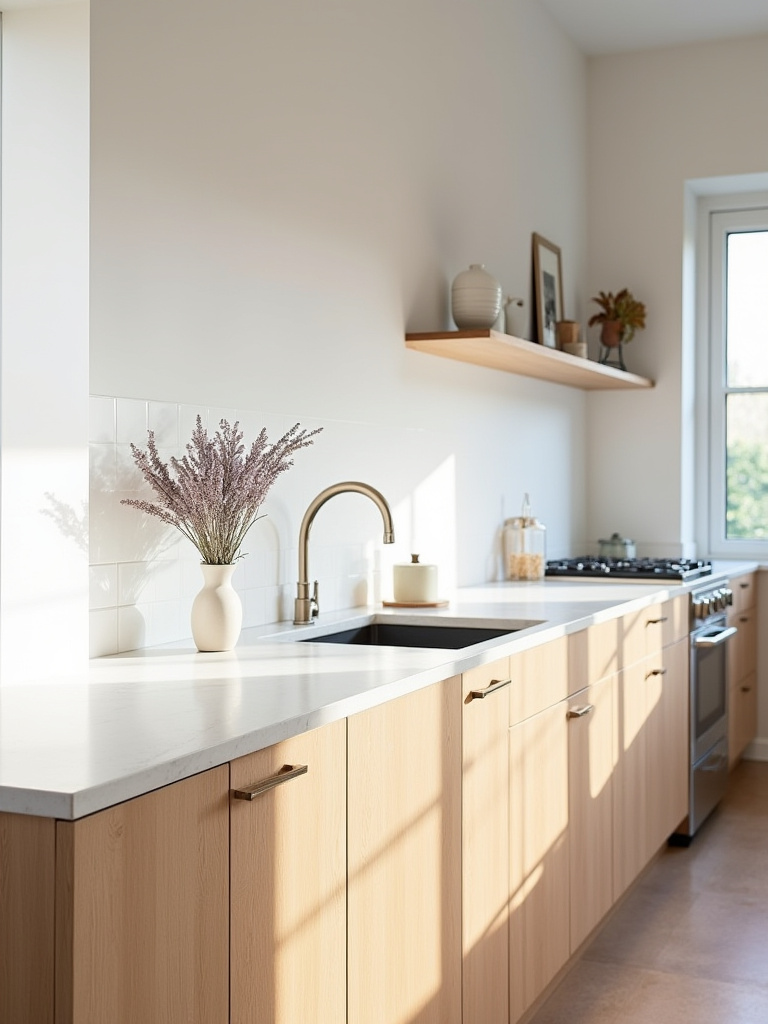
Everyone thinks they can mix styles, and they usually end up with a space that feels confused. The secret isn’t just picking one label like “Modern Farmhouse.” It’s about defining your core principles. For instance, a client told me she wanted “warm minimalism.” That became our mantra. It meant every choice had to be clean-lined but also tactile and inviting—natural wood tones, matte finishes, and soft, warm lighting. Without that guide, we could have easily drifted into a space that felt cold and sterile.
Once you know how your kitchen needs to feel, you can start applying classical design principles to make it function beautifully.
3. Optimize the Kitchen Work Triangle: Master This Classic Layout for Peak Efficiency
You’ve heard of the work triangle—the connection between the fridge, sink, and range. Everyone says you must follow it, but here’s the reality: it’s a foundational principle, not an unbreakable law. In today’s larger, multi-cook kitchens, it’s more about creating efficient zones. You might have your primary cooking triangle, but you should also have a dedicated prep zone with its own small sink, or a coffee and breakfast station outside the main traffic path.
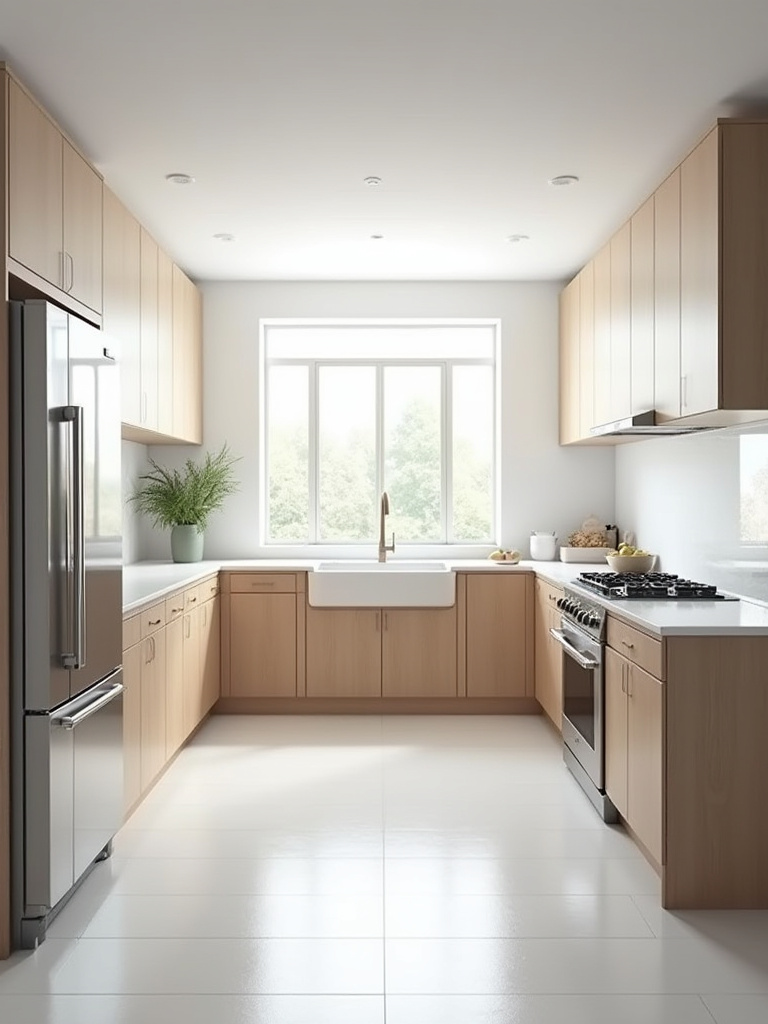
The BS is that the triangle is the only thing that matters. What’s really crucial is that no major traffic route—like the path from the back door to the family room—cuts right through your primary work zone. I’ve seen clients almost lose their minds because their kids were constantly running between the stove and the sink to get to the yard. The goal is uninterrupted flow for the cook. That’s the shortcut to a less stressful kitchen experience.
Now for the part no one likes to talk about honestly: the money. Planning your layout is useless if you can’t afford to build it properly.
4. Strategic Budget Allocation Breakdown: Prioritizing Investments Where They Matter Most
Let’s be blunt: people almost never budget enough, especially for labor and contingencies. A gorgeous plan means nothing without a realistic financial strategy. Here’s my rule: Allocate your budget where you have the most physical contact. Spend extravagantly on your countertops, your main faucet, and your cabinet hardware. These are the elements you see and touch dozens of times a day. Their quality will define your perception of the entire kitchen.
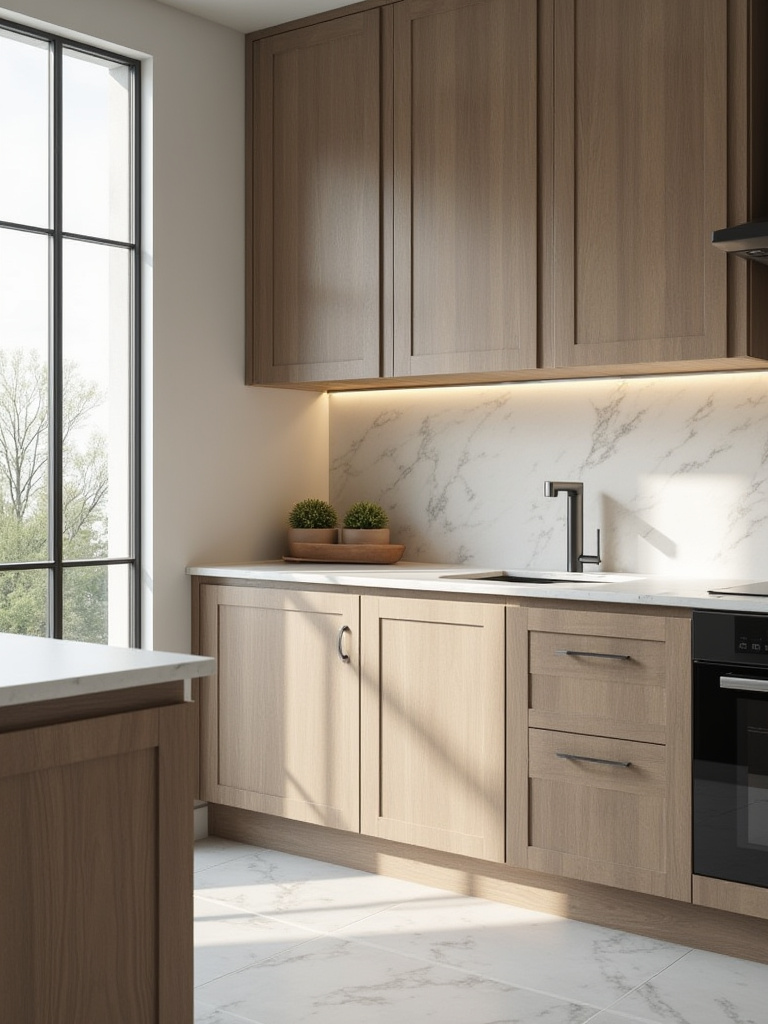
The mistake I see constantly is someone splurging on a trophy range they’ll only use on Thanksgiving, then skimping on cabinetry that starts falling apart in three years. I once convinced a client to reallocate $10,000 from an overly complex refrigeration column to upgrading their cabinets from particle board boxes to solid plywood construction with custom pull-outs. Years later, they said it was the single best decision they made. The fridge works fine, but the daily pleasure of solid, silent-closing drawers is a luxury they experience every single day.
Laying the Groundwork: Vision and Planning (Part 2)
We’ve set the foundation. Now it’s about refining your vision into a concrete plan of action. These next steps are about turning abstract ideas into a buildable reality and knowing when to bring in an expert to protect your investment.
5. Identify Non-Negotiable Wishlist Items: Pinpointing Essential Features Before Design
Every project needs a “Hill to Die On” list. These are your 1-3 absolute non-negotiables—the features that, if you don’t get them, will make the whole project feel like a disappointment. It could be a window over the sink, a dedicated baking station, or an appliance garage to hide the clutter. Defining these upfront is not about being difficult; it’s about providing clarity. It anchors the entire design and budget conversation.
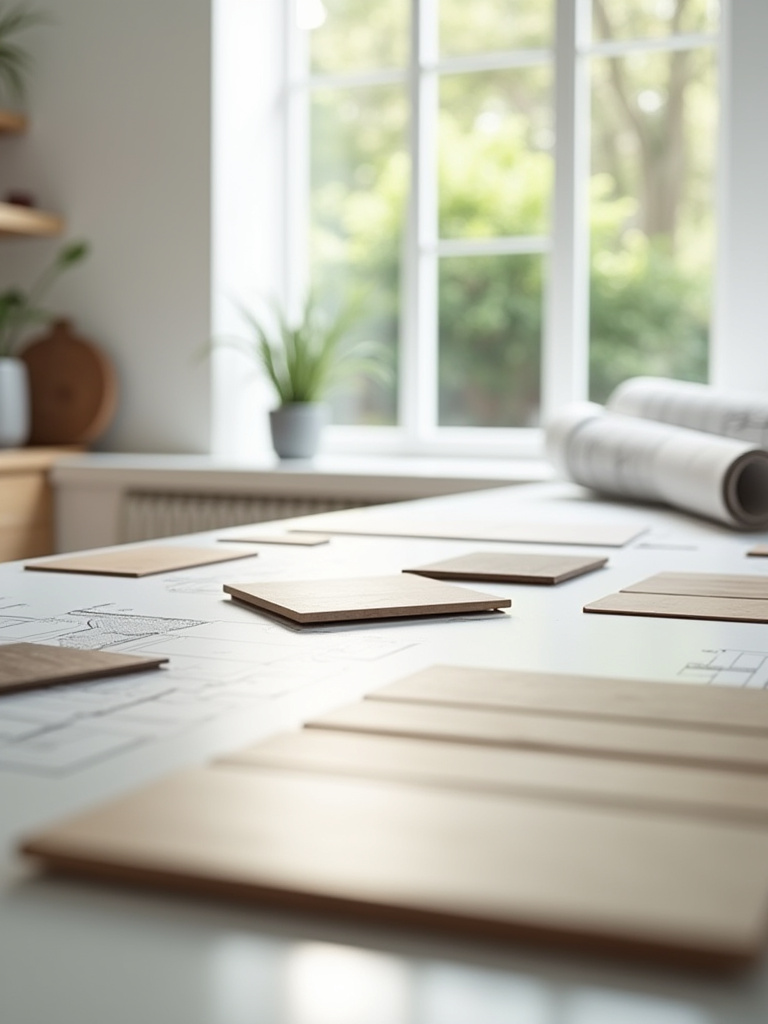
I worked with a couple where the husband’s non-negotiable was a high-end, restaurant-style faucet, and the wife’s was a massive, single-basin sink for washing large pots. Every design iteration started with those two elements. It streamlined the process immensely. In contrast, another client kept a vague “wishlist,” and we wasted weeks on designs that never quite hit the mark because their core desires weren’t clearly articulated. Be ruthless about prioritizing.
Your non-negotiables are your guide. But you need an expert to translate them into a technical plan that won’t fall apart.
6. Seek Professional Design Consultations: Leveraging Expert Insight to Avoid Costly Errors
You might think you’re saving money by forgoing a designer. I promise you, you’re not. You’re just choosing to pay for mistakes later instead of for expertise upfront. A good designer is your insurance policy against disastrous layout choices, clashing materials, and contractor misinterpretations that can cost you tens of thousands of dollars to fix.
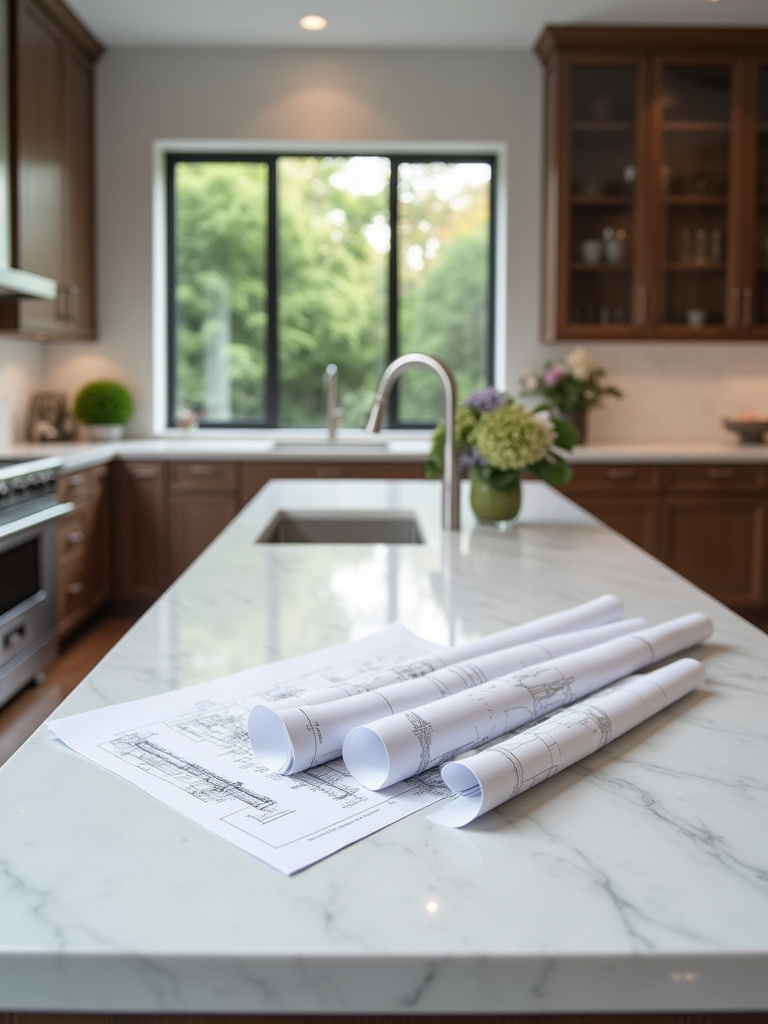
Last year, I watched a client lose nearly $50,000 because they insisted on moving a wall without a professional consultation first. It turned out to be load-bearing and contained major plumbing stacks. The structural rework and rerouting costs were astronomical. An initial design consultation would have identified that on day one and saved them a fortune in both money and stress. Paying for a professional’s eyes is the smartest shortcut you can take.
Bringing the Vision to Life: Key Selections and Layout (Part 1)
This is where the dream starts to become tangible. You’re no longer just planning; you’re choosing the physical elements that will define your kitchen. Each selection here builds on the next, so intentionality is key.
7. Choose Cabinetry for Function & Form: Balancing Storage Needs with Enduring Style
Cabinetry is the architecture of your kitchen. It is not the place to save money. The noise is all about trendy colors and door styles, but what you should be obsessed with is construction quality. Are the boxes plywood or particle board? Are the joints dovetailed? Is the hardware from a reputable brand like Blum or Hettich? This is what dictates whether your kitchen will feel solid and luxurious in 10 years or start to sag and creak in two.
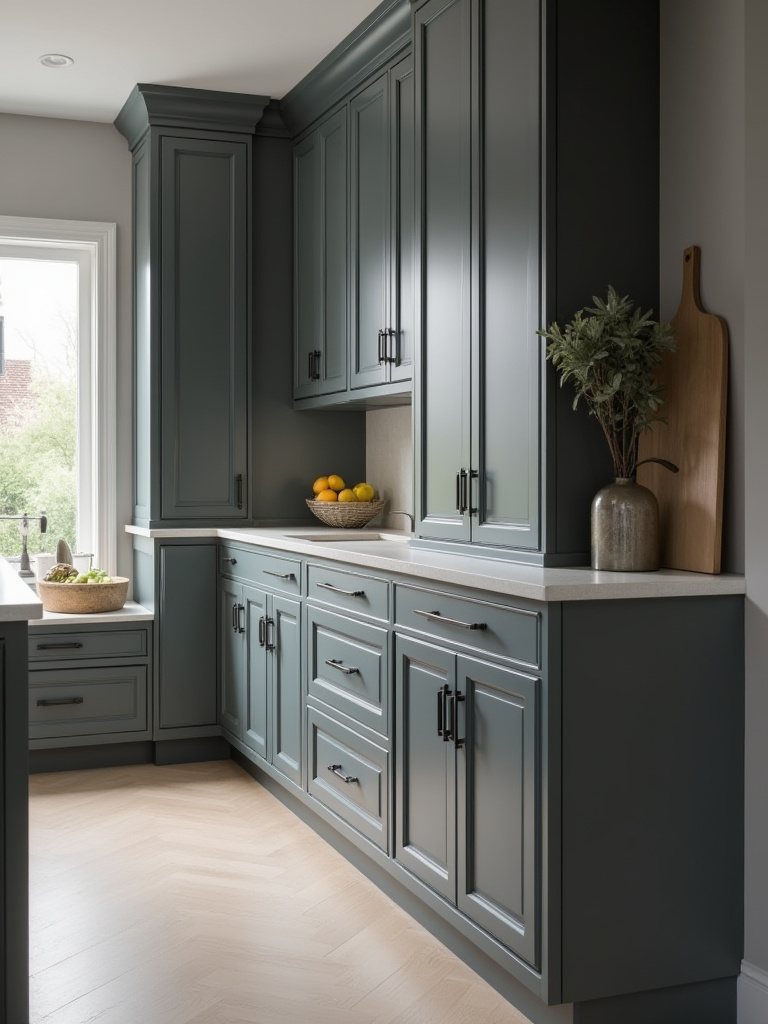
My one non-negotiable for clients is this: prioritize drawers over lower cabinets with doors. Full-extension drawers are an ergonomic miracle. You can see everything at a glance without getting on your hands and knees to find a lost pot lid. I once redesigned a kitchen for a couple in their late 60s, and the single biggest change to their quality of life was replacing all their lower cabinets with deep, sturdy drawers. It’s a game-changer.
With your cabinetry structure defined, you can now select the surface that will endure daily life while setting the aesthetic tone for the entire room.
8. Select Countertops for Durability & Beauty: Finding the Ideal Surface for Your Lifestyle
Everyone says they want marble, but very few are prepared to live with it. A countertop isn’t a piece of art; it’s a work surface. You must be brutally honest with yourself about your tolerance for maintenance. Do you want the timeless, evolving patina of natural stone, which will etch and stain over time? Or do you need the bulletproof resilience of engineered quartz that will look the same on day 1,000 as it did on day one?
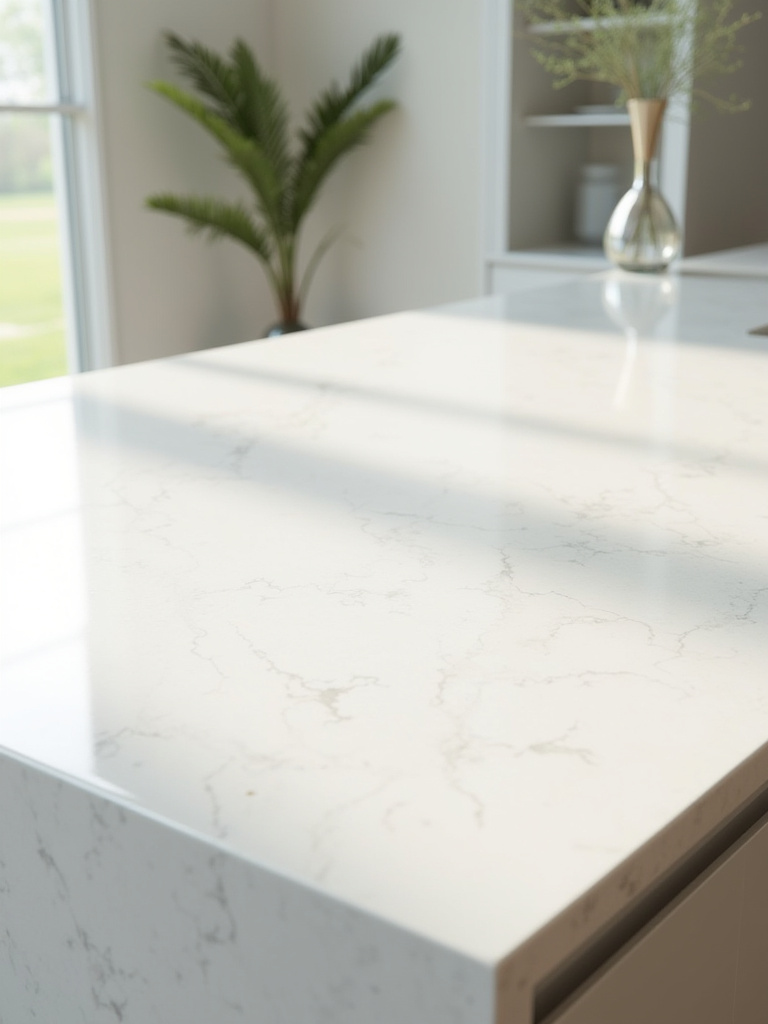
I had a client, a young family with three children, who fell in love with a gorgeous slab of Calacatta marble. I made them take a small sample home for one week. They were instructed to spill coffee, wine, and lemon juice on it. By day three, they called me, horrified by the marks. We switched to a high-quality quartz with realistic veining, and they have been profoundly happy and stress-free ever since. Your countertop must serve your lifestyle, not the other way around.
Your work surface is chosen. Now, let’s talk about the engines that drive your kitchen.
9. Integrate Appliances with Purpose: Selecting Smart Tech That Enhances Cooking
The appliance industry is full of gimmicky “smart” features you will use exactly once. A refrigerator that orders milk for you is noise. An induction cooktop that provides instantaneous, precise temperature control is a revolutionary tool that actually matters. Don’t be seduced by bells and whistles. Invest in core performance.
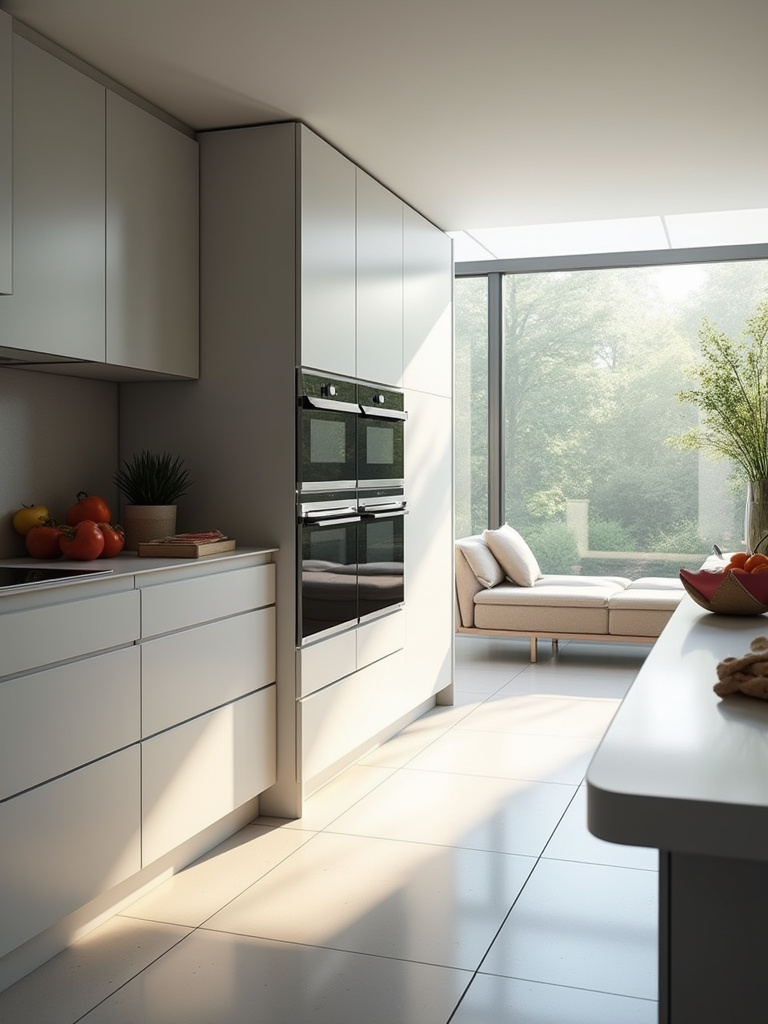
My shortcut for clients is to focus on technology that truly solves a problem. A quiet dishwasher is a must-have in an open-concept living space. An oven with a brilliant steam-injection feature is a worthy splurge for someone who bakes artisan bread every weekend. But a screen on your refrigerator door? Unless you have a specific, daily use for it, that’s money that could be better spent on higher-quality cabinetry or lighting.
Now that the major elements are in place, we need to make sure you can actually see them properly.
10. Design Dynamic Layered Lighting Schemes: Illuminating Tasks, Ambience, and Focal Points
Can we please talk about the tragedy of the single overhead light fixture? It’s the number one mistake that makes even the most expensive kitchens feel cheap and sterile. Proper lighting is non-negotiable, and it needs to be layered. You need three types: Ambient (overall illumination from recessed cans or ceiling fixtures), Task (under-cabinet lights and pendants over the island), and Accent (lights inside glass cabinets or highlighting artwork).
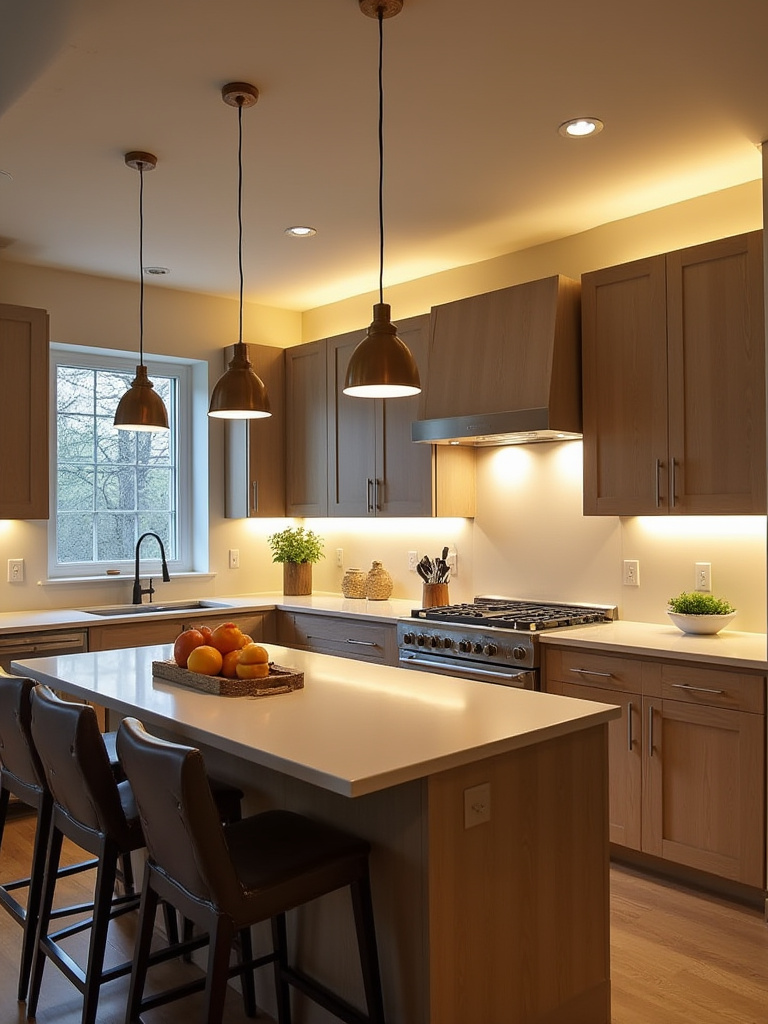
Every single light source should be on a dimmer. This is the secret to taking your kitchen from a bright, functional workspace to a moody, intimate spot for a late-night conversation with the flick of a switch. I tell my clients that a brilliant lighting plan can make a $50,000 kitchen look like a $150,000 one. It’s the most impactful investment with the highest aesthetic return, period.
Bringing the Vision to Life: Key Selections and Layout (Part 2)
We’ve covered the big three: cabinets, countertops, and appliances. Now we need to refine the layout, ensuring the space flows with an effortless grace that makes it a joy to inhabit, not just to look at.
11. Floor Plan for Foot Traffic Flow: Ensuring Clear Pathways for Safety and Convenience
The best layouts feel like an intuitive dance—everything is exactly where you expect it to be, with no awkward corners or bottlenecks. We call this choreography. It’s about designing for the natural movement of people through the space. The bare minimum for a walkway is 36 inches, but for a primary work aisle, I never go below 42 inches—and 48 inches if you expect two people to be working together.
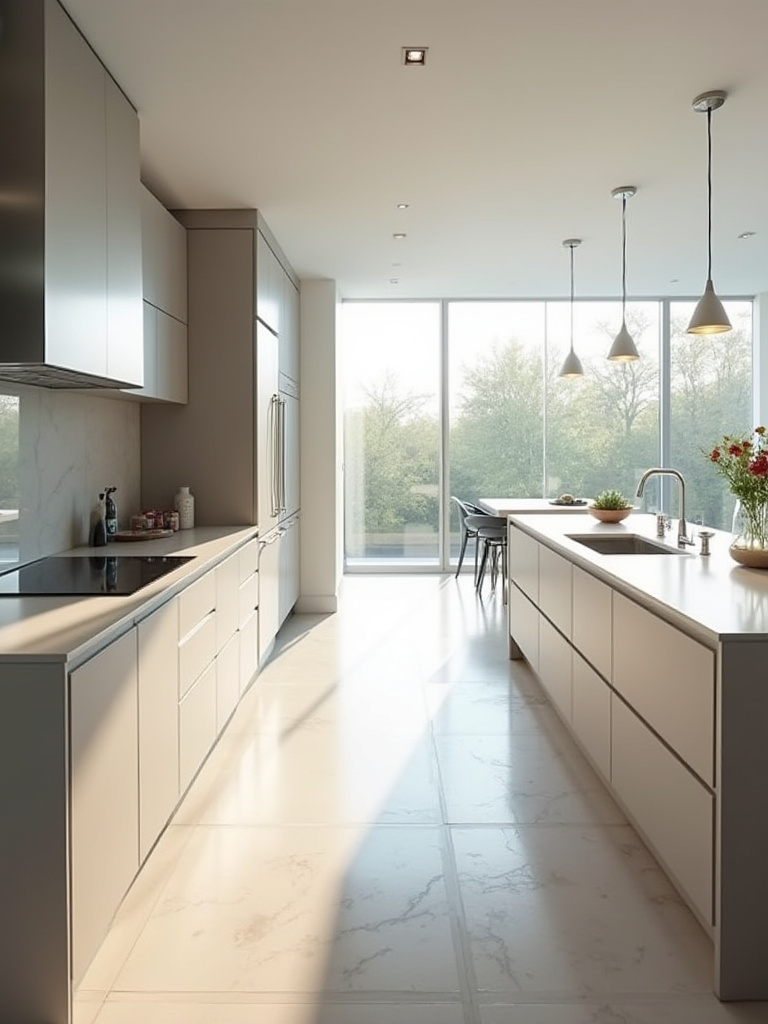
One of the biggest mistakes I see is an island that is too large for the room. It becomes an obstacle, not an asset. Before finalizing any layout, I have my clients use painter’s tape to mark the footprint of the cabinets and island on their floor. Then they literally walk through their daily routines—making coffee, unloading the dishwasher, preparing a meal. This simple exercise immediately reveals any pinch points or clearance issues before a single cabinet is ordered.
Nowhere is that choreography more important than at the central hub of the modern kitchen.
12. Consider Kitchen Island Versatility: Maximizing a Central Hub for Dining, Prep, and Storage
An island is no longer just a block of extra counter space. It is the command center of the home. It needs to be designed with purpose. Do you want it to be a prep space? Then it needs a sink and ample clear counter. Do you want it for casual dining? Think carefully about seating height—counter height (36 inches) is more comfortable for longer periods than bar height (42 inches).
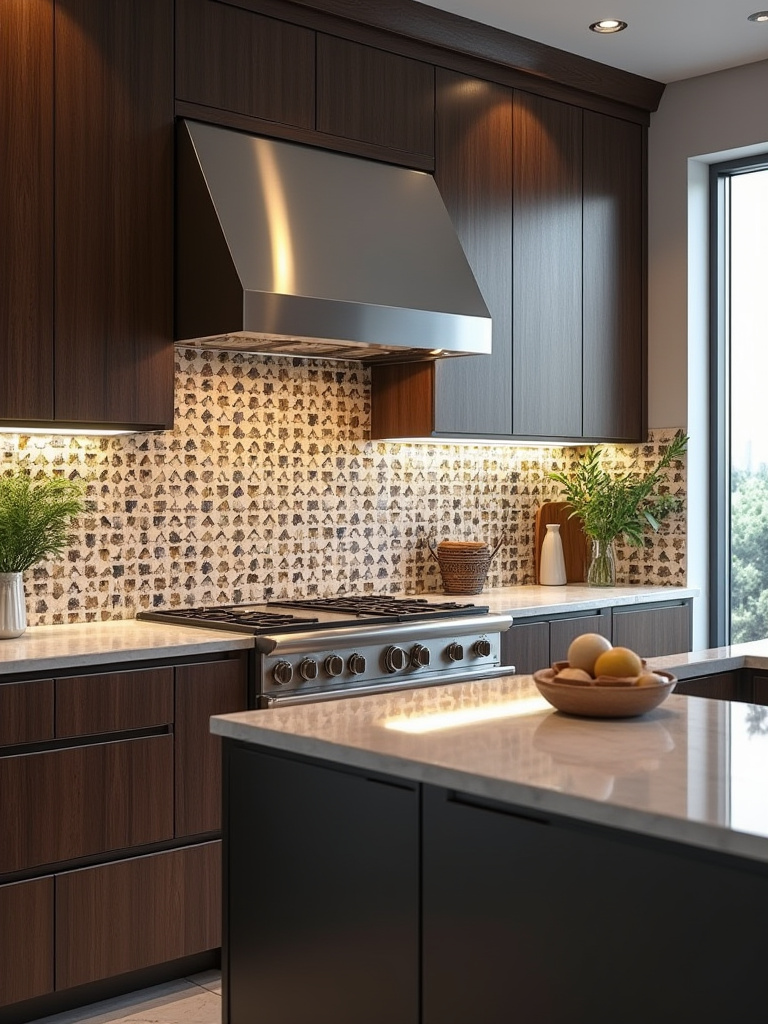
The detail everyone gets wrong is the overhang for seating. You need a minimum of 15 inches of clear knee space for comfortable counter-height seating. I’ve seen countless islands with a stingy 10- or 12-inch overhang that forces people to sit awkwardly sideways. It renders the seating almost useless. These are the small, functional details that make all the difference in the world.
Elevating the Aesthetics: Finishes, Fixtures, and Flair (Part 1)
With the layout locked in, it’s time for the details that bring the soul of the kitchen to life. These are the elements that infuse personality and a sense of refined quality into the space.
13. Curate an Impactful Backsplash: Elevating Visual Interest and Protecting Walls
Think of your backsplash as the artwork of the kitchen. It’s the perfect place to inject personality, texture, and color without committing to a trend on your expensive cabinetry. You can go bold with a patterned cement tile or opt for the quiet luxury of a single slab of stone that matches your countertop. Whatever you choose, it should be a deliberate, impactful statement.
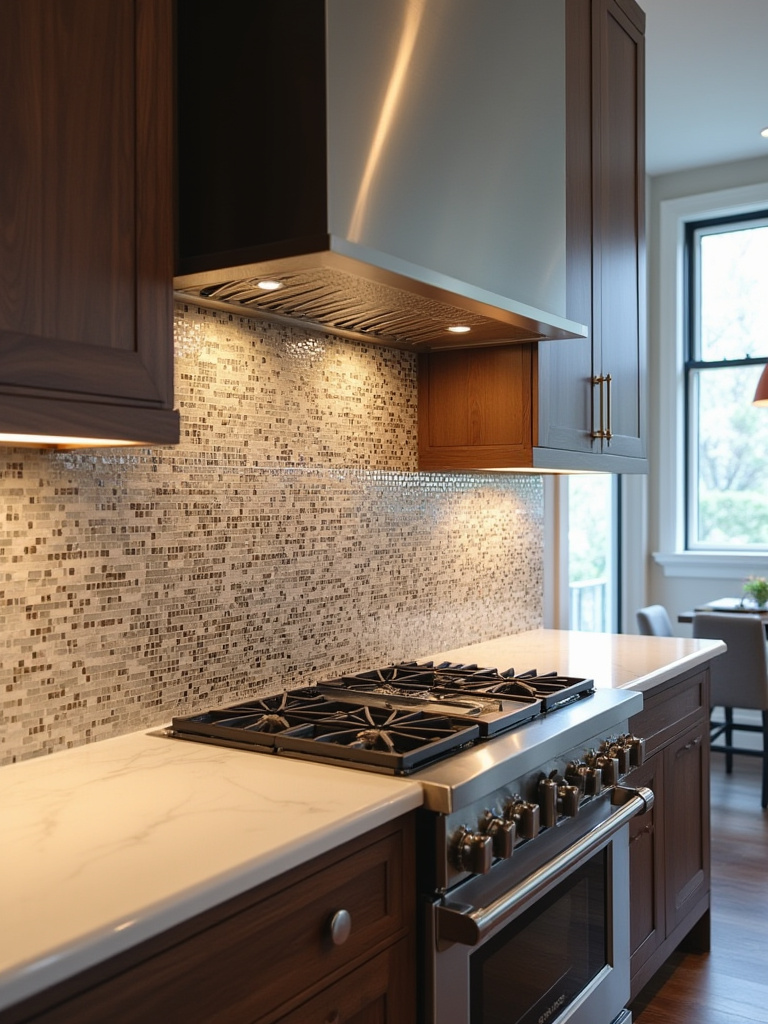
My pet peeve is when the backsplash stops awkwardly at the bottom of the upper cabinets. For a truly high-end, custom look, take that tile all the way to the ceiling. It creates a dramatic vertical lift that makes the entire space feel grander and more intentional. This one move can single-handedly elevate the entire design. It’s a shortcut to a magazine-worthy look.
With your “artwork” selected, we now choose the jewelry that will adorn your cabinetry.
14. Harmonize Hardware for a Polished Look: Small Details That Define Your Kitchen’s Character
Hardware is the jewelry of your kitchen. It is a small detail with a disproportionately large impact on the perceived quality of the space. It’s what you physically touch every time you open a door or drawer, so it needs to feel substantial and well-crafted. This is absolutely not the place to cut corners.
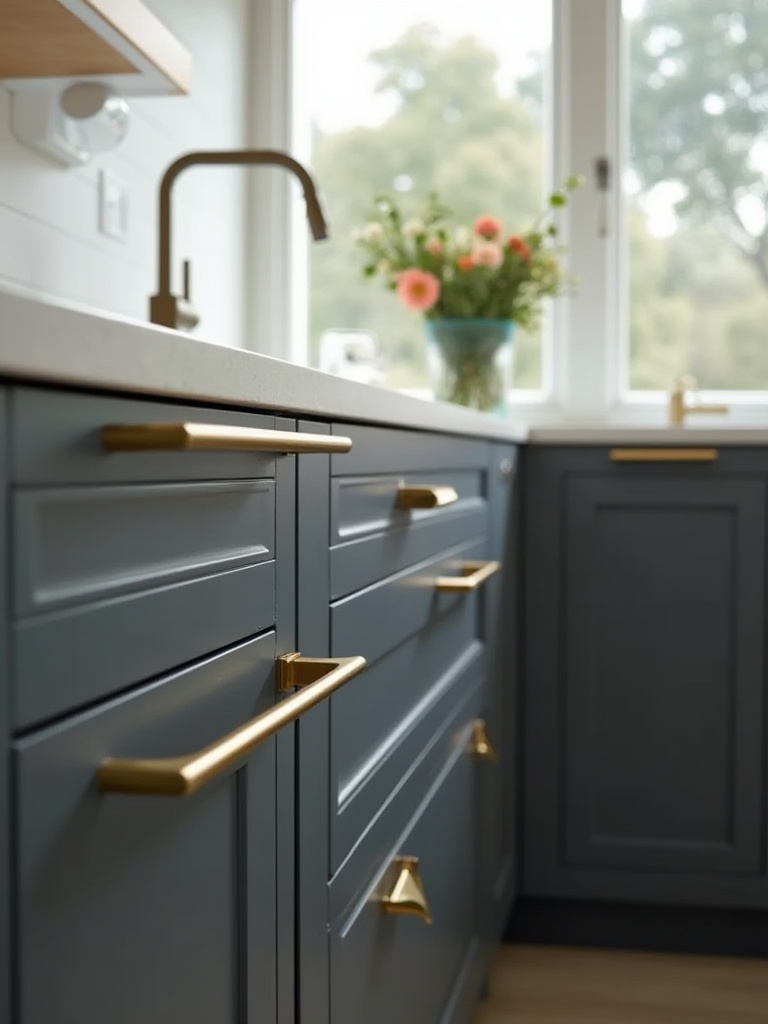
The noise is about matching finishes perfectly. But the secret to a sophisticated look is often in a controlled, intentional mix. For example, matte black hardware can look stunning when paired with a single, elegant brass faucet or light fixture. The key is to choose one dominant metal and use the other as a deliberate accent. It creates a curated, layered look rather than a flat, one-note design.
That concept of investing in touchpoints is especially true for the most-used fixture in the entire room.
15. Invest in a Statement Sink & Faucet: Combining Daily Utility with Significant Style
Your main kitchen faucet is the hardest-working piece of equipment in your home. A cheap, flimsy faucet can undermine the feel of a multi-thousand-dollar countertop. A high-quality faucet with a solid brass body, a durable ceramic disk valve, and a smooth pull-down mechanism is a non-negotiable investment.
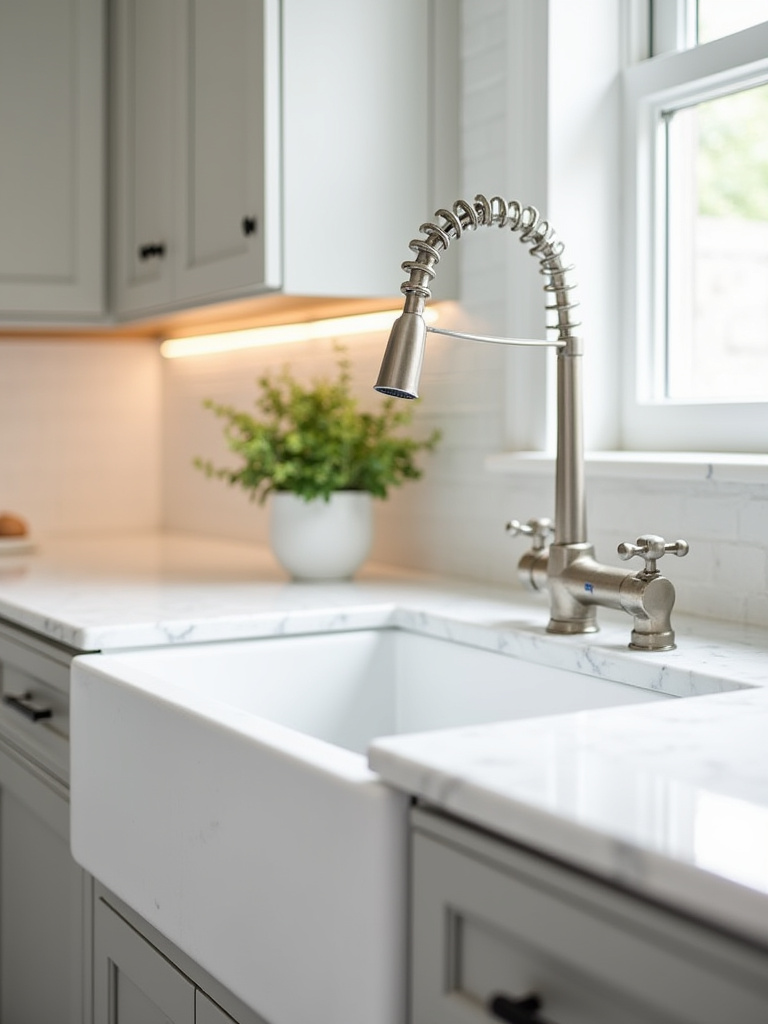
Consider this story: a client had a stunning kitchen but complained it didn’t feel luxurious. I pointed out their lightweight, wobbly faucet. We swapped it for a beautifully engineered piece from a heritage brand. The next week, they called to say it completely changed their daily experience. The solid, satisfying feel of a quality fixture is a subtle but powerful reminder of the investment you’ve made in your home.
All these individual elements must now be brought together into a unified and inviting whole.
16. Develop a Cohesive Color Palette: Unifying Surfaces to Create an Inviting Atmosphere
The all-white kitchen has had its moment. Today, a sophisticated palette is about creating a mood with nuanced, layered colors. The key to getting this right is understanding undertones. That “greige” cabinet color that looked perfect in the showroom might look sickly green in your north-facing kitchen. Always, always get large paint swatches and samples of your chosen materials and look at them together, in your actual space, at different times of day.
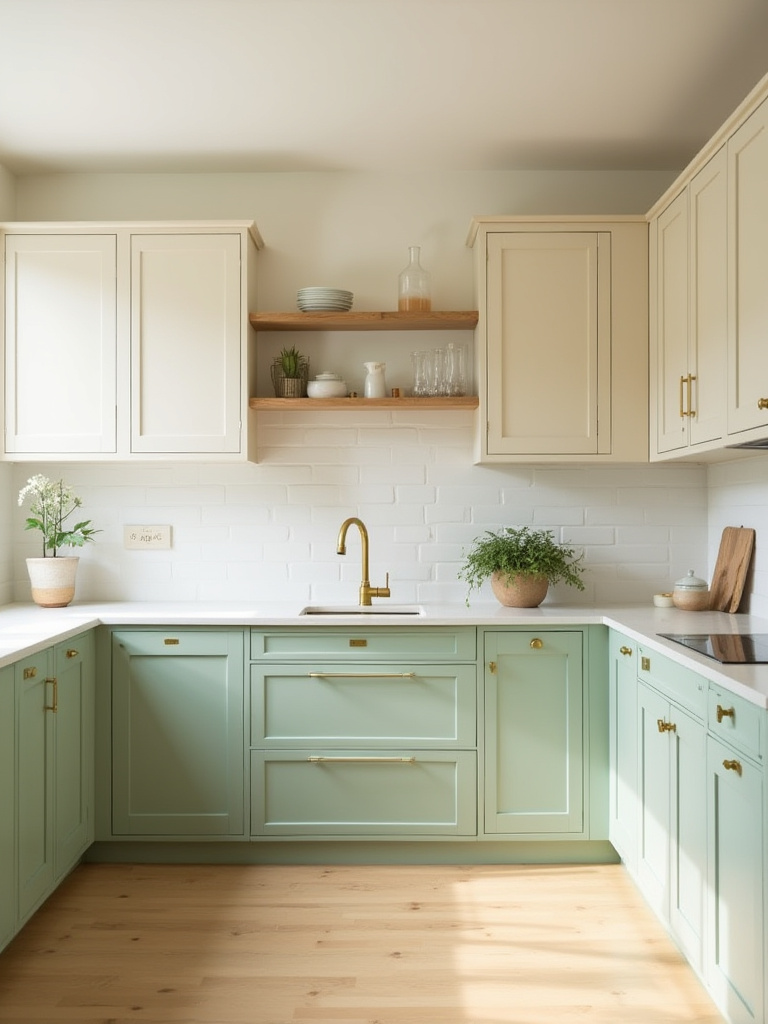
The secret from the pros is the 60-30-10 rule. 60% of your room should be a dominant color (like your cabinetry), 30% a secondary color (perhaps your flooring or countertops), and 10% an accent color (hardware, decor, textiles). This simple formula ensures balance and prevents the space from feeling chaotic or overwhelming. It’s a framework, not a prison, but it’s an excellent starting point for building a harmonious palette.
Elevating the Aesthetics: Finishes, Fixtures, and Flair (Part 2)
We’ve covered the visible beauty. Now let’s delve into the hidden elements and personal touches that truly define a space as uniquely and comfortably yours. This is where a house becomes a home.
17. Integrate Clever Storage Solutions: Maximizing Every Inch with Pull-Outs and Organizers
True luxury isn’t about what people see; it’s about an effortless quality of life. The greatest luxury in a kitchen is brilliant, intuitive storage. Countertops are for working, not for storing your life’s clutter. Everything should have a home, and it should be easily accessible. This is where custom pull-outs, drawer dividers, and appliance garages are worth every single penny.
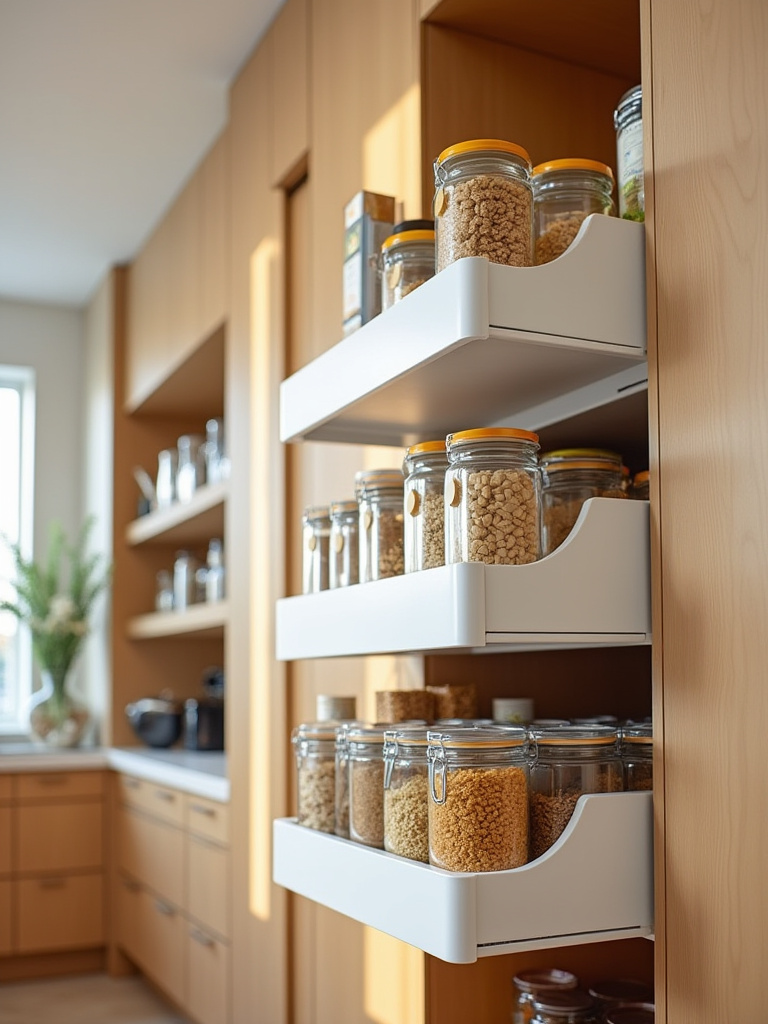
I once designed a kitchen for a client who was an avid spice collector. Her biggest frustration was a chaotic cabinet full of tiny jars. We designed a custom, full-height, pull-out spice rack next to the range. It was only 9 inches wide, but it completely transformed her cooking process and brought her visible joy every time she used it. That’s the power of solving a real, daily problem with smart design.
Once the functional clutter is elegantly hidden away, you have a canvas for what truly matters: your personality.
18. Add Personalized Decorative Elements: Infusing Your Kitchen with Unique Character and Warmth
Your kitchen should not look like a sterile showroom. It needs soul. It needs to tell your story. This is where you layer in the elements that are meaningful to you: a piece of art that you love, a collection of hand-thrown pottery on an open shelf, a vintage rug that adds warmth and texture, or even just a beautiful bowl filled with fresh lemons.
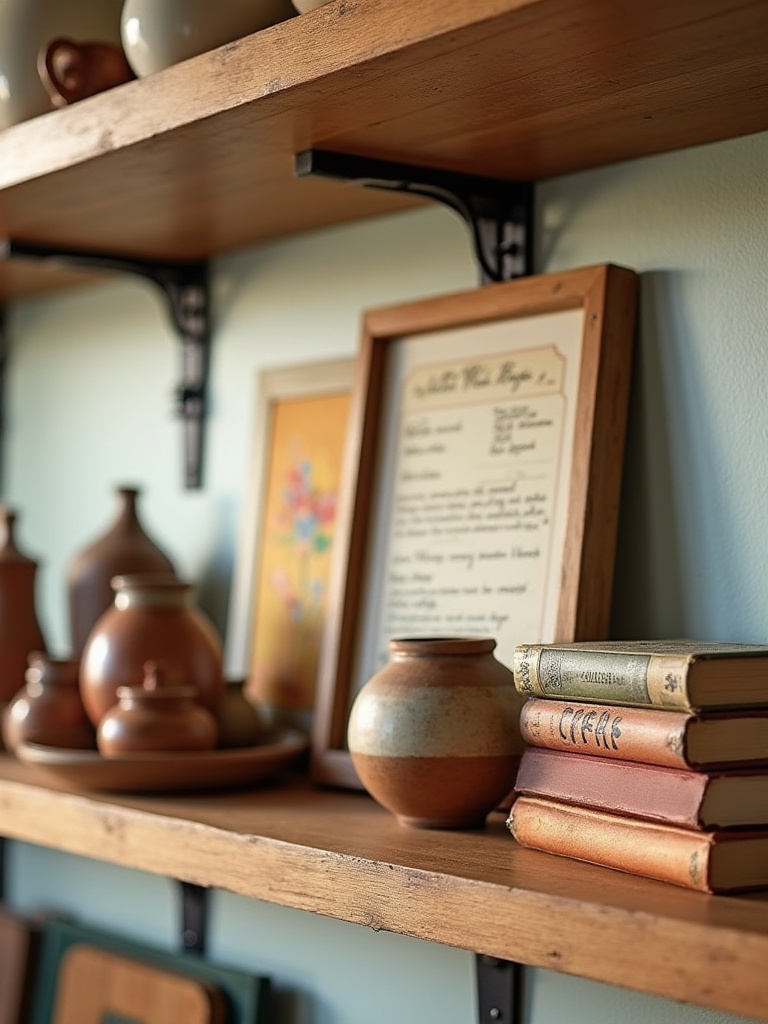
So many people are afraid to “mess up” their new kitchen with personal items. But it’s these things that prevent a space from feeling generic. I always tell my clients to save a small portion of their budget for these finishing touches. It’s what makes the space feel like a curated, beloved part of your home rather than just a collection of brand-new materials.
Optimizing Function and Longevity: Tech and Care (Part 1)
A beautiful kitchen is only half the battle. It must also be a healthy, functional, and durable space that stands the test of time. This section focuses on the invisible systems and routines that protect your investment.
19. Embrace Smart Kitchen Technology: Automating Tasks for Enhanced Convenience
Let’s circle back to smart tech with a simple rule: if it doesn’t solve a real problem or make a frequent task genuinely easier, skip it. The most valuable “smart” integrations are often the simplest. Think motion-activated faucets for when your hands are covered in dough, or a smart oven you can preheat on your way home from work. These are tangible time-savers.
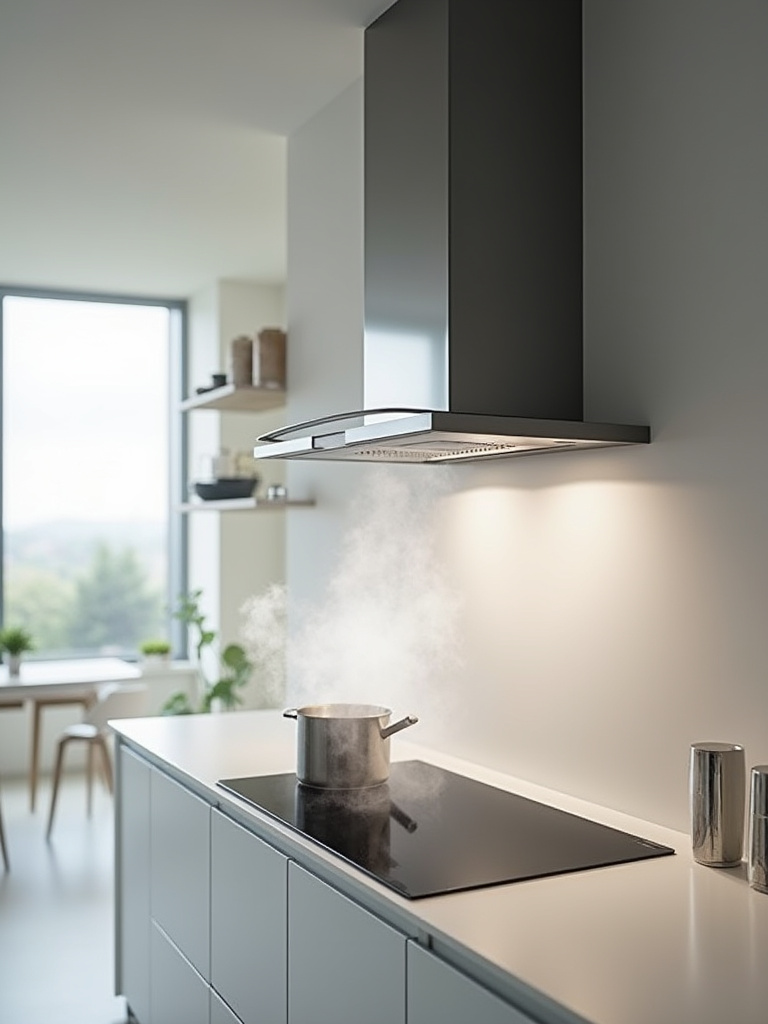
One piece of tech I often recommend is an induction cooktop. The speed, safety (no open flame), and precision control are a revelation for most home cooks. It’s a technology that fundamentally improves the cooking experience itself, which is a far more valuable investment than a fridge that plays music. Focus on the tools, not the toys.
As you’re cooking with those new tools, it’s critical to consider the air you’re breathing.
20. Ensure Optimal Ventilation Solutions: Protecting Air Quality and Preserving Your Investment
Ventilation is the least sexy but one of the most important components of your kitchen. A poor range hood doesn’t just fail to remove cooking odors; it allows grease and moisture to settle on your beautiful new cabinets, ruining their finish over time. It also fails to protect your indoor air quality from harmful pollutants. This is a health and preservation issue.
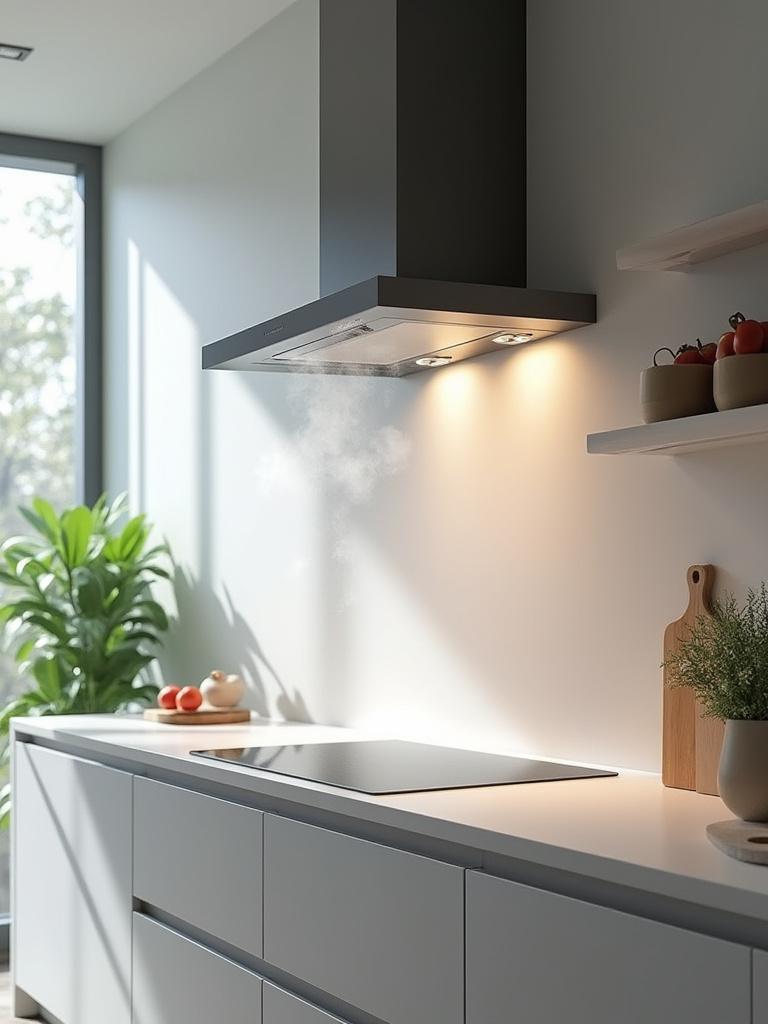
The shortcut is to understand two terms: CFM (how much air it moves) and Sones (how loud it is). For a high-powered gas range, you need a high-CFM hood. But a powerful hood that sounds like a jet engine is one you’ll never turn on. Look for a low Sone rating (3 or below at a normal setting is great). Investing in a quiet, powerful, and properly vented hood protects both your health and your expensive finishes.
While you’re managing what goes out of the kitchen, you also need an elegant plan for managing waste within it.
21. Strategize Efficient Waste Management: Integrating Recycling and Compost Systems Seamlessly
There is nothing that disrupts the beauty of a new kitchen more than a plastic trash can sitting out in the open. Integrated waste management is a hallmark of sophisticated design. A double or triple pull-out bin system hidden inside a cabinet is an absolute must. It keeps clutter and odors contained and makes sorting for recycling and compost an effortless part of your routine.
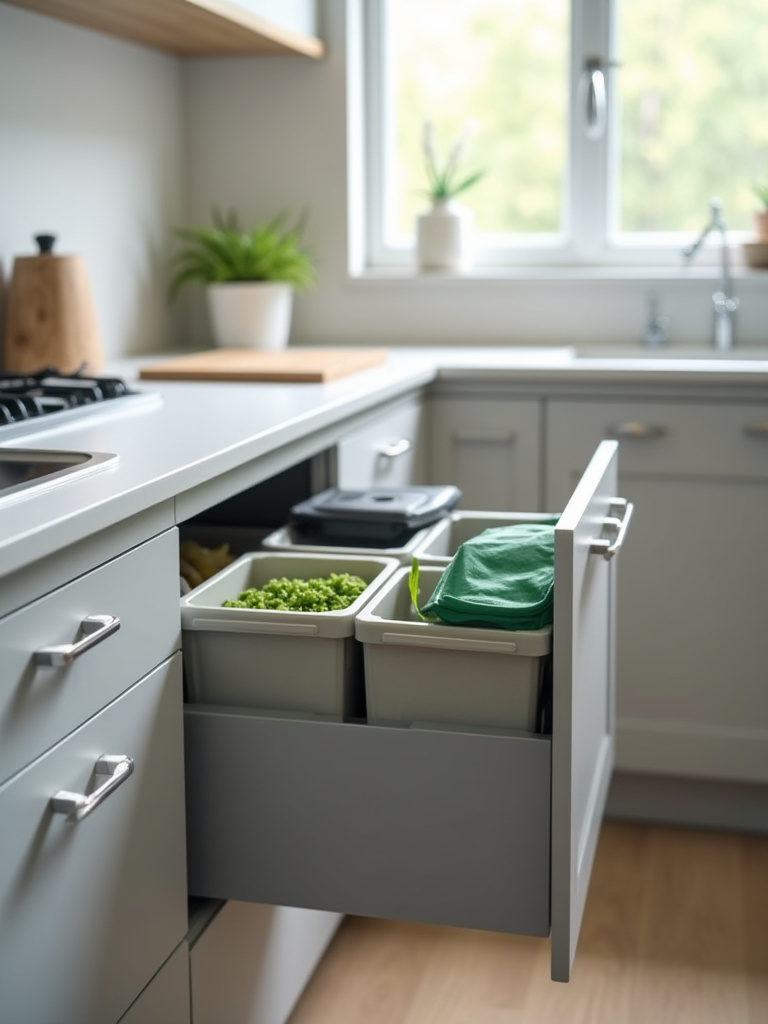
For my clients who compost, I often recommend a small, sealed stainless steel compost bin integrated directly into the countertop. You can slide vegetable scraps directly into it from your cutting board. It’s a small luxury that dramatically streamlines the cooking and cleanup process. This is the kind of thoughtful detail that elevates a kitchen from good to great.
With all these systems in place, the final step is committing to their care.
22. Implement Regular Maintenance Routines: Extending the Life and Beauty of Your Kitchen
You would never buy a classic car and then refuse to change the oil. Your kitchen is the same. It is a significant investment made of hard-working components that require care. Wiping down spills on your stone countertops immediately, cleaning your range hood filters monthly, and running a cleaning cycle on your dishwasher are not chores; they are acts of investment protection.
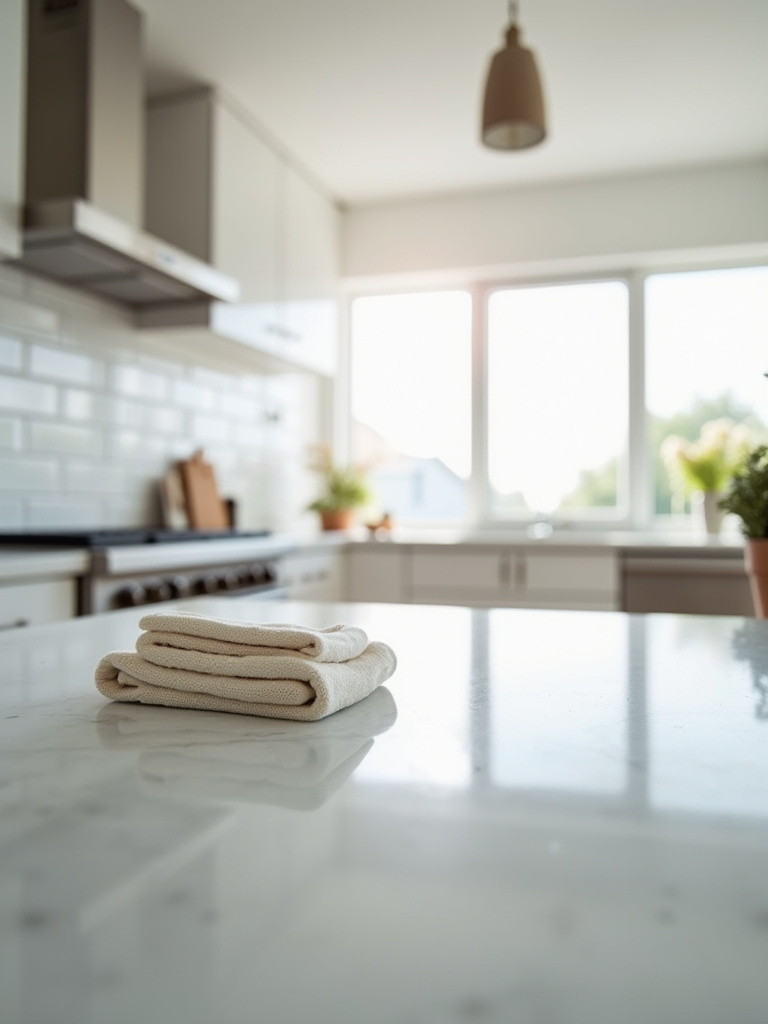
Create a simple schedule. Daily wipes, weekly cleans, monthly deep dives. It’s the small, consistent actions that prevent minor issues from becoming catastrophic failures. A little bit of proactive care will keep your kitchen looking and performing like new for years longer than if you simply neglect it.
Optimizing Function and Longevity: Tech and Care (Part 2)
We’ve covered the here and now. The final layer of truly brilliant design is planning for the future—creating a kitchen that can adapt, evolve, and stand as a responsible, timeless part of your home for years to come.
23. Plan for Future Adaptability: Designing with an Eye Toward Evolving Needs and Trends
A truly timeless kitchen isn’t one that’s stuck in the past; it’s one that’s prepared for the future. The trick is to invest in timelessness for the things that are difficult and expensive to change: your layout, your cabinet quality, and your flooring. Keep these classic and neutral.
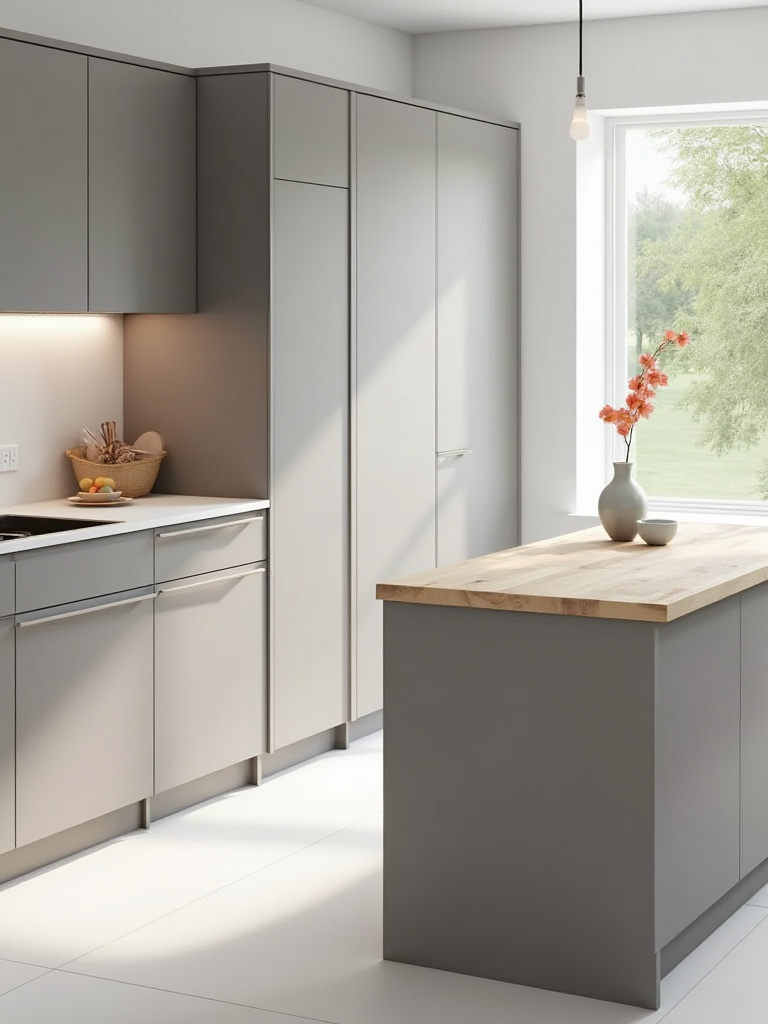
Infuse personality and trends into the elements that are easy and relatively inexpensive to swap out. A bold paint color on the walls, a trendy tile for the backsplash, cabinet hardware, or light fixtures—these can all be updated in a decade without tearing the entire kitchen apart. This approach gives you a kitchen that feels fresh and current today, but has the good bones to adapt to new styles tomorrow.
That forward-thinking approach must also extend to our impact on the planet.
24. Incorporate Sustainable Design Choices: Minimizing Environmental Impact for a Greener Home
Sustainability in luxury design isn’t about compromising; it’s about choosing better. It’s about investing in quality and longevity over disposable trends. The most sustainable choice is often the one you won’t have to replace in five years. This means selecting durable, classic materials and energy-efficient appliances that reduce your daily consumption.
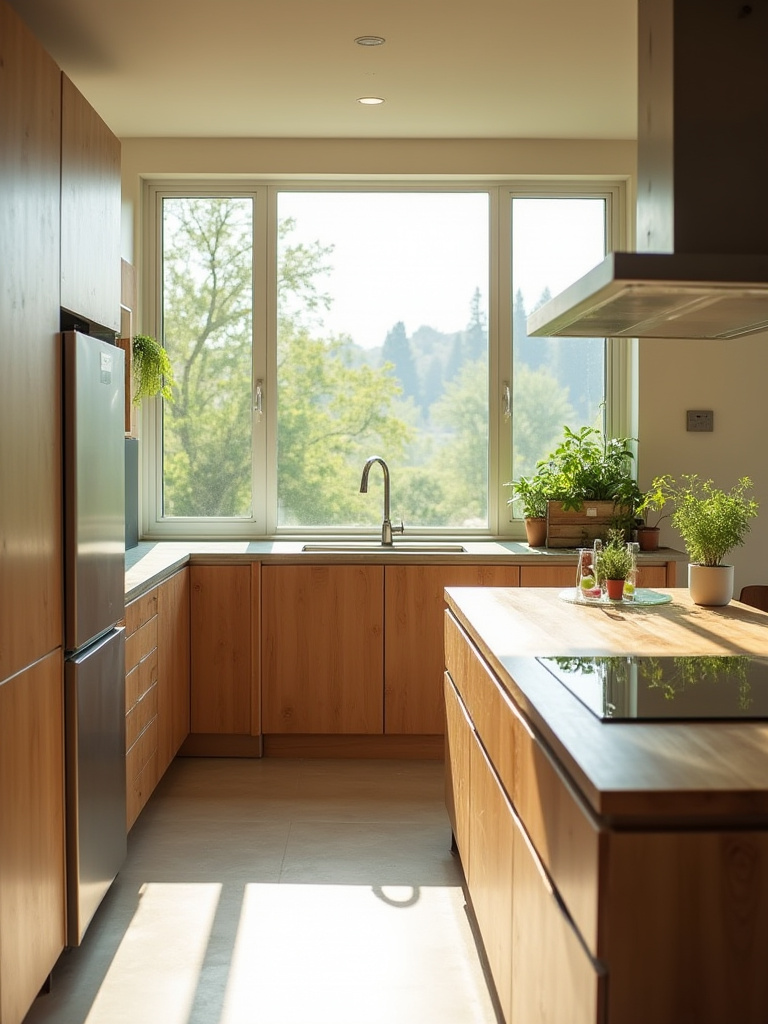
Look for materials with low VOCs (Volatile Organic Compounds) to ensure healthier indoor air quality. Consider countertops made from recycled materials or wood sourced from responsibly managed forests. Sustainability isn’t just an aesthetic; it’s a commitment to quality and well-being that aligns perfectly with the true ethos of luxury—investing in things that are beautiful, functional, and made to last.
Conclusion
So, there you have it. The real story behind creating a kitchen that isn’t just a fleeting trend but an enduring part of your home. It starts not with a shopping list, but with a deep understanding of your own life. It’s about investing in the bones—the layout, the lighting, the cabinetry—and the daily touchpoints that bring you quiet joy. It’s about making deliberate, informed choices that prioritize function and feel over flash.
Don’t let yourself be paralyzed by the endless options. Start with one thing. Take one hour this week to simply stand in your current kitchen and observe. Notice the bottlenecks, the frustrations, the little moments of ease. That is where your true design journey begins. The kitchen of your dreams is absolutely within reach, and it’s not about having the most expensive things. It’s about having the right things, perfectly arranged for the beautiful life you live.
